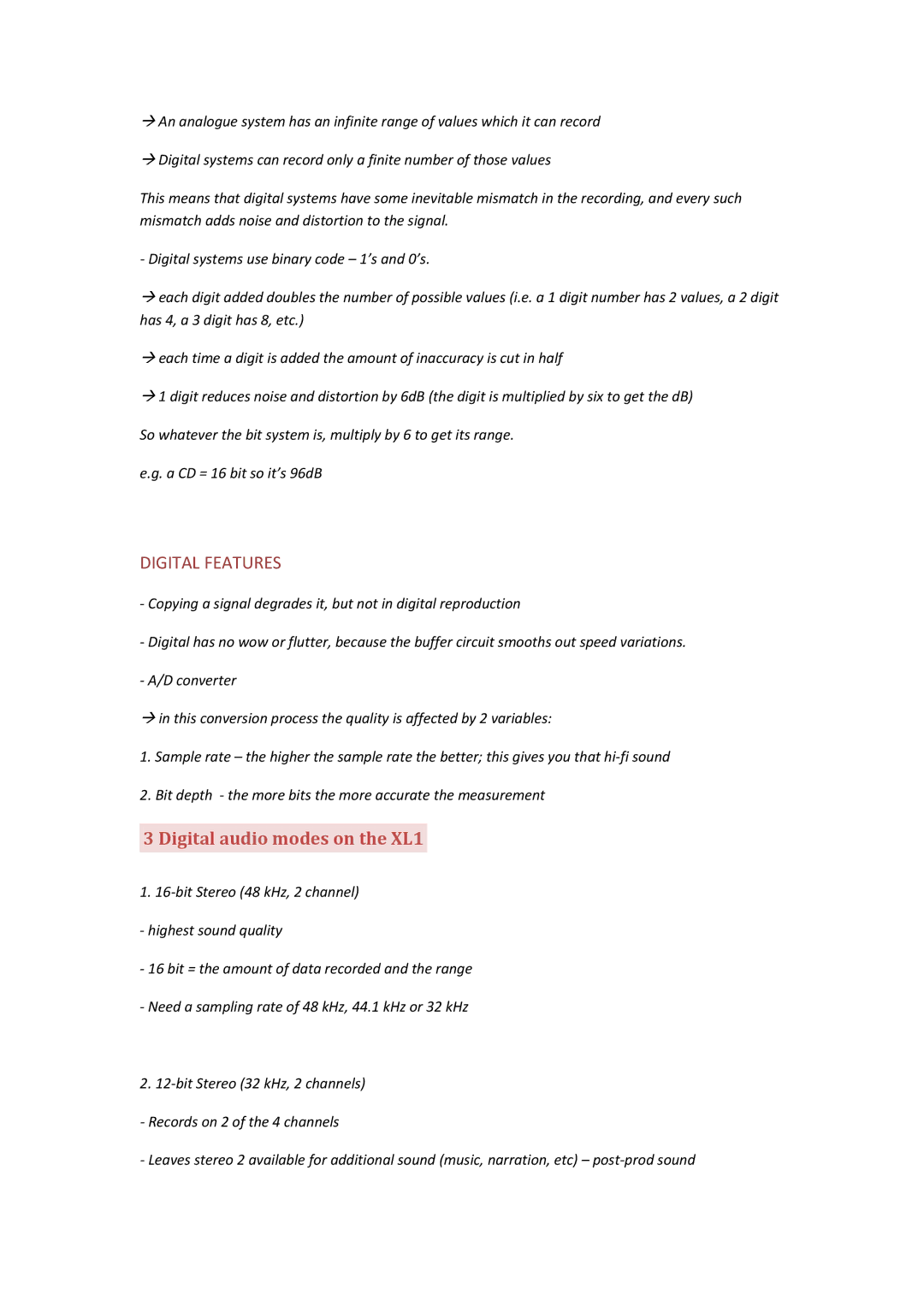ÆAn analogue system has an infinite range of values which it can record
ÆDigital systems can record only a finite number of those values
This means that digital systems have some inevitable mismatch in the recording, and every such mismatch adds noise and distortion to the signal.
‐Digital systems use binary code – 1’s and 0’s.
Æeach digit added doubles the number of possible values (i.e. a 1 digit number has 2 values, a 2 digit has 4, a 3 digit has 8, etc.)
Æeach time a digit is added the amount of inaccuracy is cut in half
Æ1 digit reduces noise and distortion by 6dB (the digit is multiplied by six to get the dB)
So whatever the bit system is, multiply by 6 to get its range. e.g. a CD = 16 bit so it’s 96dB
DIGITAL FEATURES
‐Copying a signal degrades it, but not in digital reproduction
‐Digital has no wow or flutter, because the buffer circuit smooths out speed variations.
‐A/D converter
Æin this conversion process the quality is affected by 2 variables:
1.Sample rate – the higher the sample rate the better; this gives you that hi‐fi sound
2.Bit depth ‐ the more bits the more accurate the measurement
3 Digital audio modes on the XL1
1. 16‐bit Stereo (48 kHz, 2 channel)
‐highest sound quality
‐16 bit = the amount of data recorded and the range
‐Need a sampling rate of 48 kHz, 44.1 kHz or 32 kHz
2. 12‐bit Stereo (32 kHz, 2 channels)
‐Records on 2 of the 4 channels
‐Leaves stereo 2 available for additional sound (music, narration, etc) – post‐prod sound
